In this article, we want to tell you about the Sleeping Beauty ballet. Marius Petipa (1818-1910) and Piotr Tchaikovsky (1840-1893) created three ballets that would become paradigms of the Russian academic style. Sleeping Beauty was the first collaboration between the French choreographer and the Russian composer. It was made at the request of Prince Ivan Vsevolovski, who had been director of the Imperial Theaters since 1881. The argument was extracted and adapted from the story of Charles Perrault, who was a civil servant and courtier at the time of Louis XIV. Precisely, Petipa and Ivan Vsevolojski wanted to recreate the royal atmosphere of the Palace of Versailles and also pay tribute to the Romanov dynasty. For this reason, the authors created an aristocratic atmosphere for this ballet.
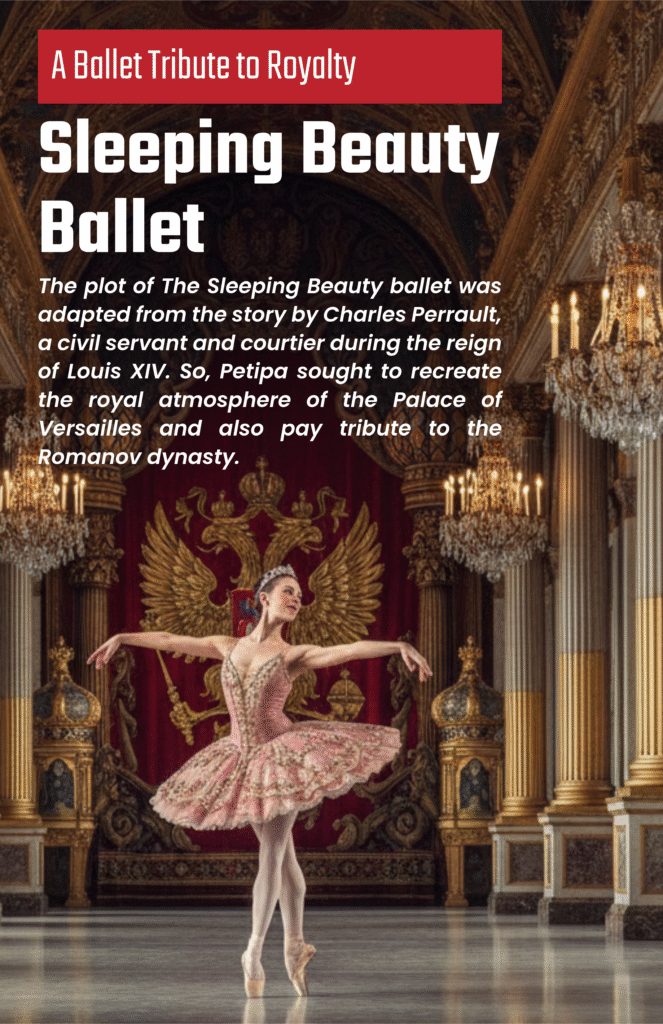
Table of Contents
What style of dance is Sleeping Beauty ballet?
Tchaikovsky finished his work in just 49 days. The composer included an adage in each act. These adages show the different stages of the protagonist’s life, from her childhood to her meeting with her true love. The musician also included a ballroom dancing in the second act, and a polonaise and a mazurka in the third. An awesome march closes the ballet and the imposing tribute to the kings.
As for the choreography, Petipa masterfully combined the most brilliant academic technique and pantomime performance. An example of this is the Fairy Carabosse, especially in Act I, where she puts a curse on the girl. During the premiere of the ballet, Enrico Cecchetti that role. He also performed the Blue Bird variation.
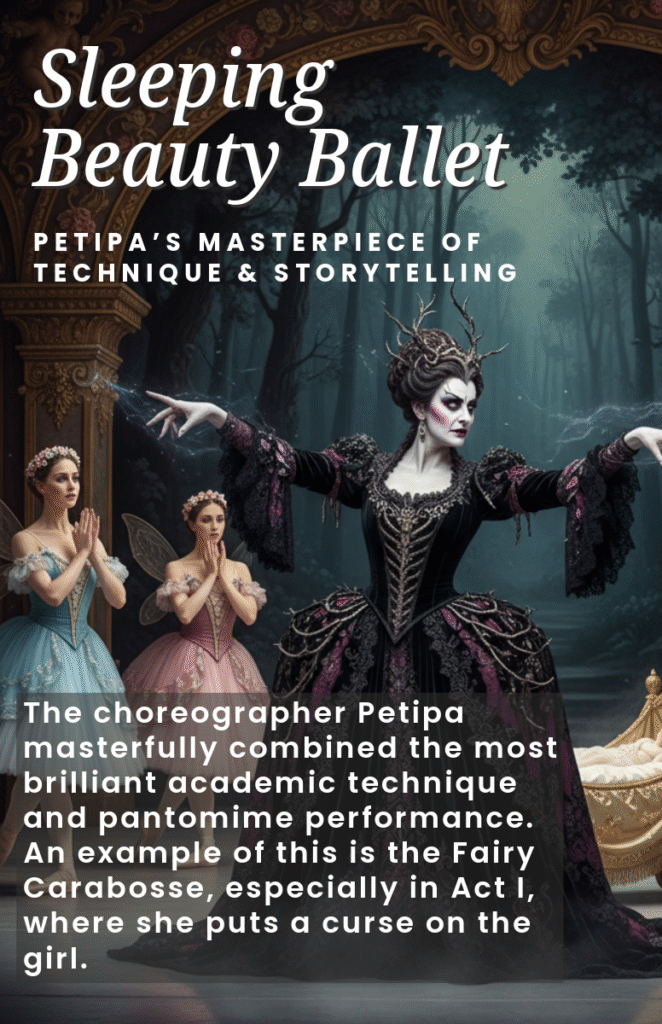
On the other hand, Petipa included also two divertissements: one in the first act and another in the third. These aim to show soloist variations to the audience. A Grand Pas and a variation for each of the seven fairies make up the first divertissement. Finally, the divertissement of the third act offers a parade of characters from some of Perrault’s tales: Little Red Riding Hood and the Wolf, Tom Thumb, Cinderella, Puss in Boots and the Blue Bird.
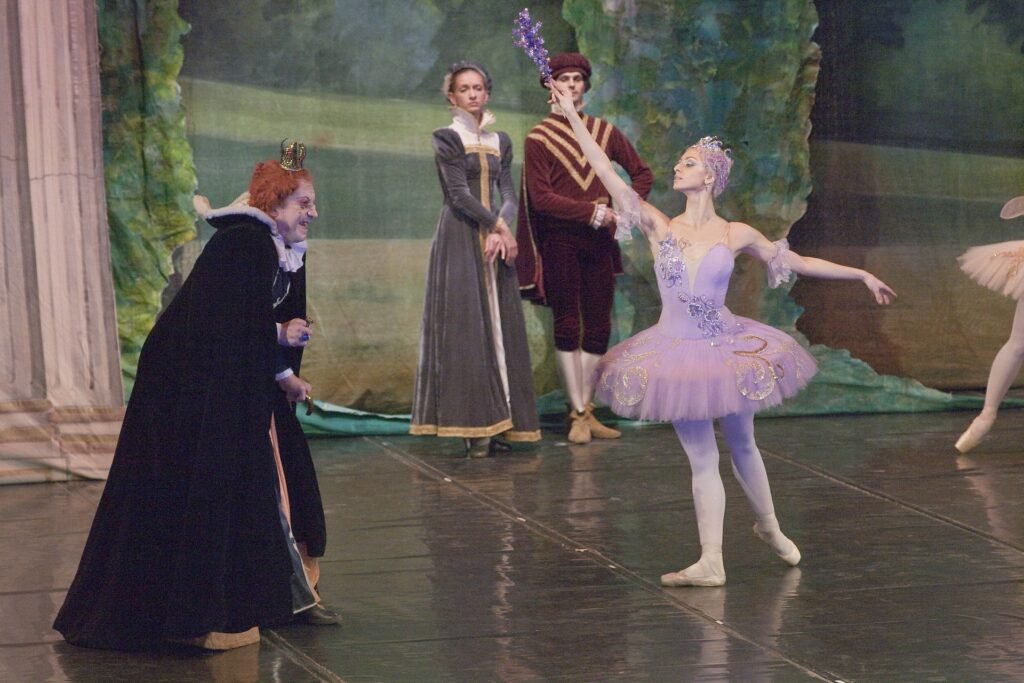
When did Sleeping Beauty ballet premiere?
The premiere of Sleeping Beauty was held at the Mariinsky Theater in Saint Petersburg on January 3, 1890. Carlota Brianza (Aurora), Pavel Guerdt (Desireé), María Petipa (Fairy of Lilas) and Enrico Cecchetti (Carabosse fairy and Blue Bird) played the main roles. Prince Ivan Vsevolovski was in charge of the sets and costumes, and Riccardo Drigo was in charge of the orchestral direction.
The Story of the Sleeping Beauty Ballet
The ballet tells the story of Princess Aurora, who, on the day of her christening, receives a curse from the witch Carabosse because she is furious at not having been invited. The witch swears that on her sixteenth birthday, Aurora will prick her finger with the spindle of a spinning wheel, and she will die.
Then, the Lilac Fairy intervenes, and although she cannot undo the curse, she modifies it by allowing the princess a peaceful hundred-year sleep instead of death. At the end of those hundred years, she would wake up to the kiss of a handsome prince
In the version on which the ballet is based, the princess’s parents, the king and the queen, survive the hundred-year dream to celebrate the princess’s wedding to the prince. At the end of the play, other characters from Perrault’s stories are included, such as Puss in Boots, Little Red Riding Hood, Cinderella, and The Blue Bird.
The Sleeping Beauty ballet focuses on the conflict between good (personified by the Lilac Fairy) and evil (the witch Carabosse), with the repeated use of two musical themes representing each of the forces. A prologue and three acts make up the structure of this ballet
Prologue: The Christening
The King and Queen celebrate the birth of their daughter, Princess Aurora. The Lilac Fairy and the rest of the good fairies come to the celebration with a gift for the newborn princess.
They dance the waltz all together and an individual variation. Suddenly, the evil fairy Carabosse interrupted the party. She was furious because the king hadn’t invited her to the dance. So, Carabosse announces that when Aurora becomes a maiden, she would prick her finger with a spindle and die. The Lilac Fairy, Aurora’s godmother, guarantees that the princess wouldn’t die. But she would remain asleep for a hundred years waiting to be awakened by the love kiss of a prince. To avoid the witch’s curse, the King issues an order prohibiting the use of spindles in his kingdom.

Act I: The Spell
At Princess Aurora’s birthday party, four princes came from different lands to ask for her hand. During the festivities, an old woman approaches Aurora and gives her a bouquet of roses with a spindle hidden inside it (in some versions she simply gives her a spindle). Fascinating by the flowers, the princess dances with the bouquet. But suddenly, she pricks her finger, passes out, and falls to the ground.
The old woman takes off the cloak that hid her and shows her true identity: the Fairy Carabosse. The princes attack her, but she manages to disappear. At that moment, the Lilac Fairy appears. Although she can’t undo the evil spell, she sends the entire kingdom into a hundred-year slumber with a flick of her wand. The undergrowth grows, hiding the castle deep in the forest.
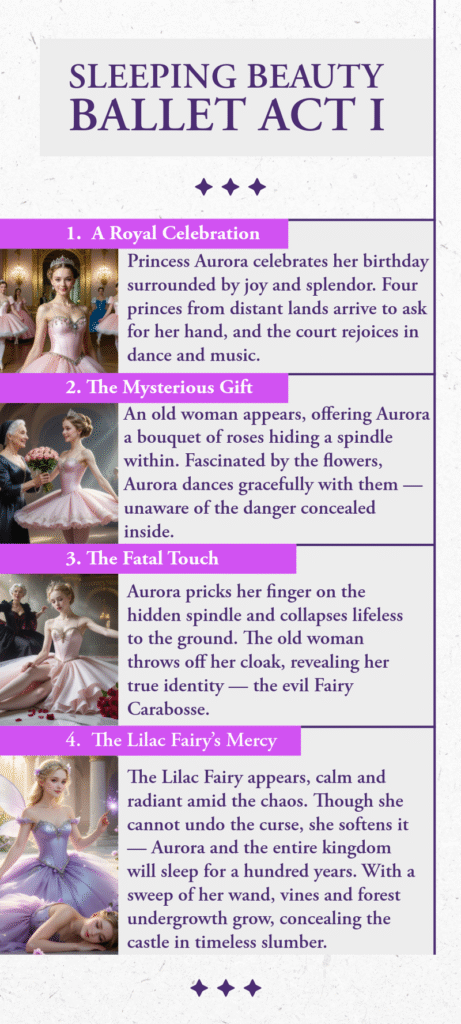
Act II: The Vision
A hundred years have passed. Prince Désirée (or Florimond in other versions) is hunting in the forest with his friends and his entourage. Once left alone, the Lilac Fairy appears in front of him and conjures up the vision of Aurora.
The prince begs the Fairy to inform him where the sleeping girl is. The Fairy guides him to the garden where Aurora rests.
Then, Désirée approaches the bed where Aurora lies deeply asleep and kisses her, awakening her and the entire court of her enchantment. The Prince asks the King and Queen for their daughter’s hand.
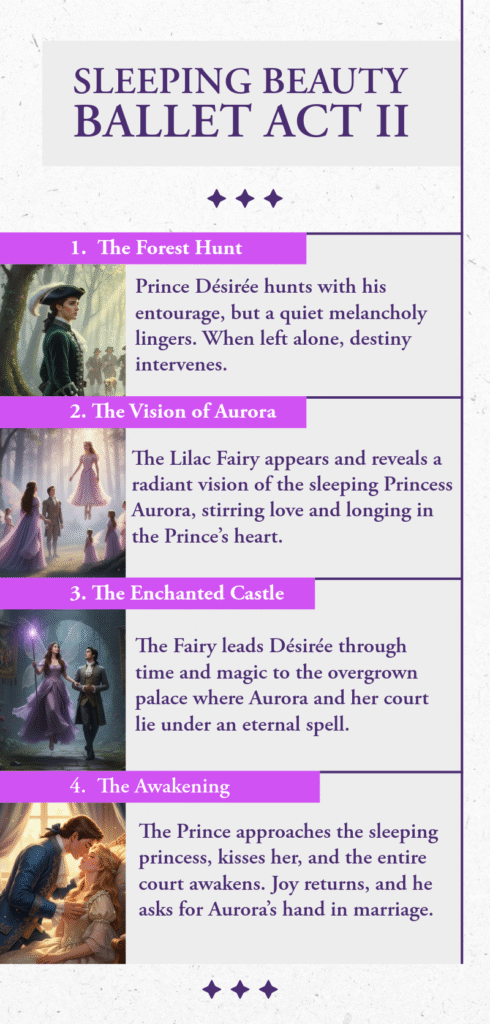
Act III: The Wedding
The magnificent wedding of Aurora and Désirée takes place in the palace. Different characters dance for them: Blue Bird, Puss in Boots, Little Red Riding Hood and the Wolf, Cinderella and the prince.
Aurora and Désirée dance a Grand Pas de Deux to express the happiness that unites them. The act ends with an apotheosis in which all the characters dance happily and celebrate the happy ending.
The Sleeping Beauty is a masterpiece of the Romantic Ballet era. It has lived and vibrated for a century on all stages of the world, in countless versions. The struggle between good and evil remains at the centre of the work. And the power of love overcomes all obstacles one more time.
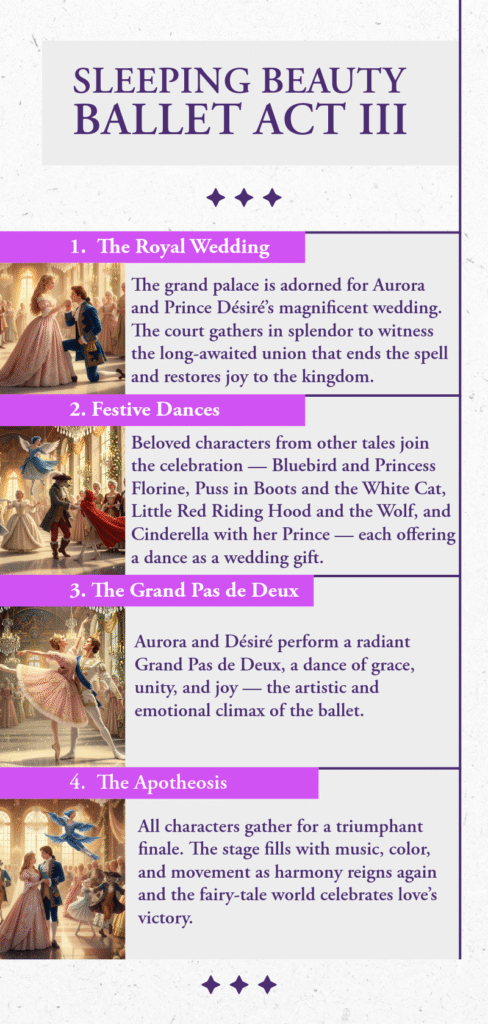
Buy your tickets for the Sleeping Beauty 2025/2026
English National Ballet
23 October 2025 – 28 June 2026
BookNew York City Ballet
11 – 22 February 2026
On sale to public: Aug 4, 2025, 12:00 PM
More InfoBoston Ballet
May 28–June 7, 2026
Subscribe


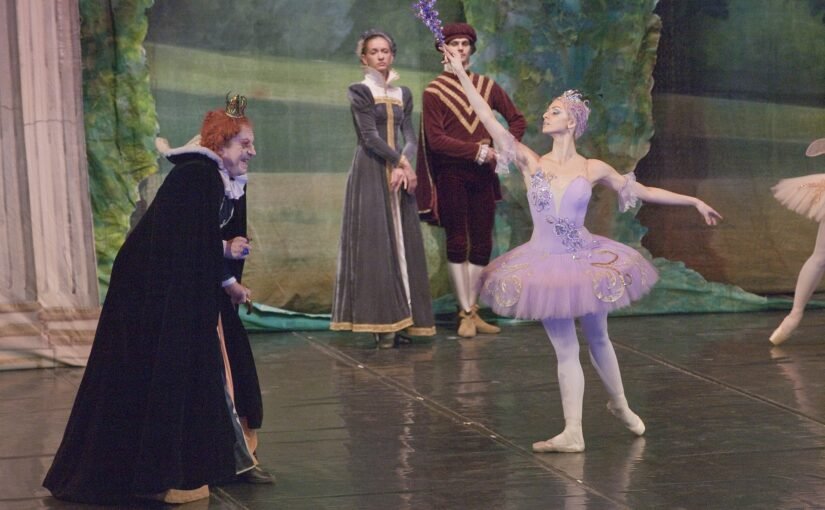

Leave a Reply